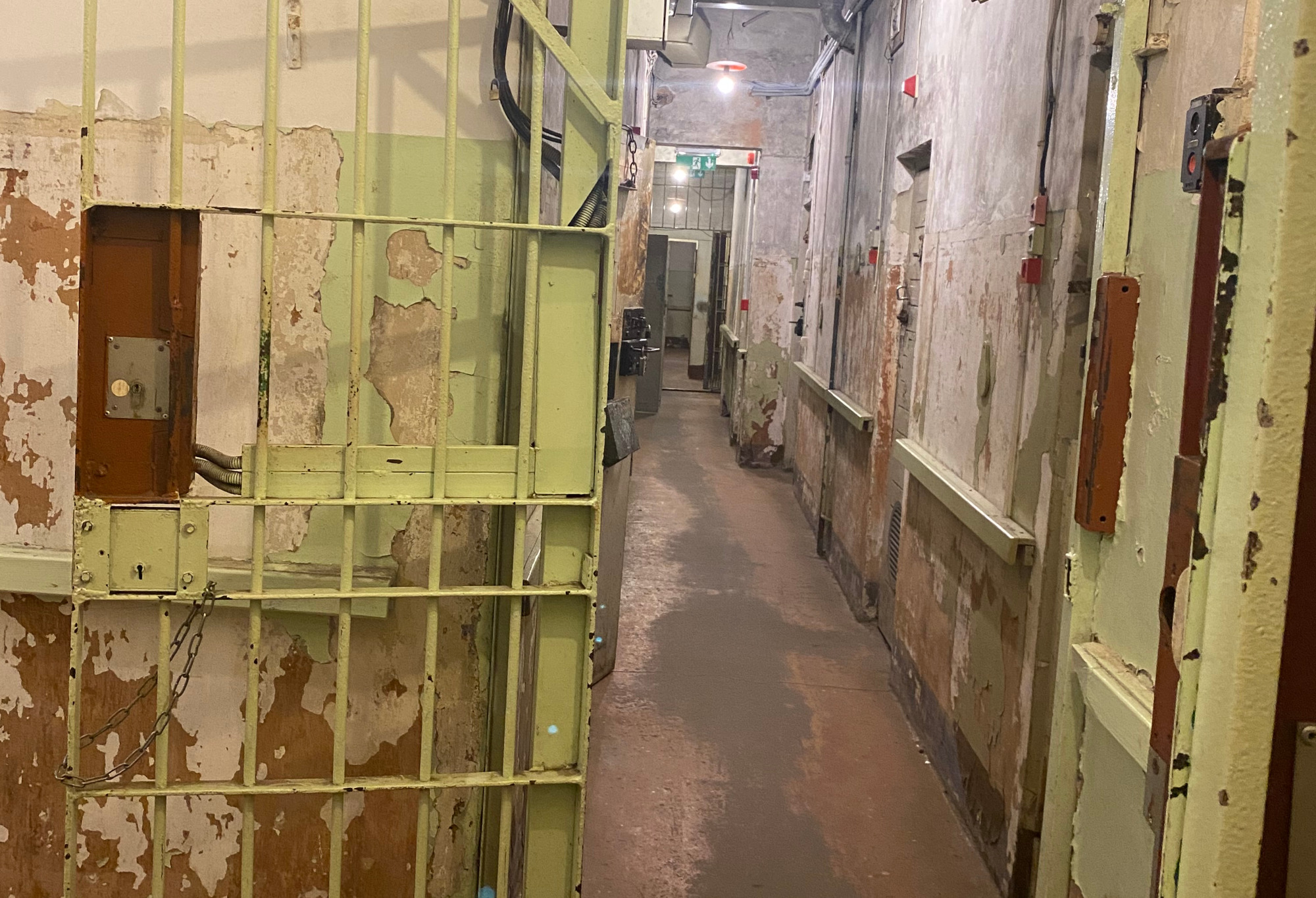For a gateway into hell, the innocuous brown wooden front door of 61 Freedom Street in downtown Riga is surprisingly narrow – just two feet across.
Known as the Corner House, the two-foot-wide door into the old KGB Latvian HQ would be easy to miss amidst the wide boulevards and the ornate, art nouveau, balconied apartments and shops of the Latvian capital.
Beyond that narrow threshold there is no mistaking that you’ve entered a world of terror
But beyond that narrow threshold there is no mistaking that you’ve entered a world of terror. The tiny, barred reception area beyond the entrance door is no more than a human cage, where desperate relatives once came to enquire about the fate of their loved ones. A bleak antechamber whose further internal door serves only to hide the labyrinth of interrogation rooms, bars, spy holes, locks, and execution chamber, in the realm beyond. A portal into the vast hidden KGB terror machine to break the bones and bodies of those suspected of defying the Soviet regime.
Like Latvia itself, the 1912 building has changed hands many times. It was a music school, a pharmacy, luxury apartments, before falling into the inventory of the KGB in 1940 during the Soviet occupation of Latvia, then the Nazis from 1941-44, before falling back into the thrall of its more permanent KGB landlord with the return of the Red Army until the collapse of the Soviet empire in 1991.
Inside, the Corner House building is falling apart, plaster and paint hang from the ceilings and walls – torturers don’t bother with internal décor – and every floor, door frame, bar and lock is chipped and battered, uncared for. Only the elaborate chandeliers, hanging forlorn from the high ceilings, hark back to the building’s former glory.
The narrow doors, the narrow corridors, even the narrow elevator, where it is almost impossible to physically turn around, are all deliberate – a means of preventing escape or rebellion amongst the KGB’s captives. A primitive touch pad alarm system lines each corridor once enabling a KGB guard to warn his fellow henchmen within moments of a prisoner revolt. The very architecture of terror.
There are spyholes in the doors and in walls of the cells so the guards could easily check on the inmates. A primitive kitchen. And toilets without any cubicles or privacy where prisoners, stripped of all their possessions and dignity, had to relieve themselves under the eye of their Russian and co-opted Latvian communist captors.
The Corner House was a waystation, an interrogation centre, rather than a permanent prison. The corridors lead to a maze of subterranean cells that held up to 30 to 40 prisoners in each cell in stifling heat, lights on 24/7, shitting in a communal bucket, for weeks on end as KGB interrogators tortured and broke them down to obtain confessions. Before Stalinist courts then rubber-stamped their victims to long penal sentences or transportation to Siberian prison camps.
Compared to East Germany, where Putin first cut his KGB baby teeth in the 1980s, Riga and Latvia, long subjugated, must have been a relative backwater for an ambitious young KGB officer in the post war era – like being assigned to Leeds. But the Corner House remained the Latvian KGB HQ for over 50 years.
For a regime dedicated to the perfection of New Soviet Man, the KGB still expended a huge effort to cover up its own crimes; arresting its victims at night, disappearing them into its vast gulag of prisons after secret trials and even building backyard walls around its Latvian HQ so curious neighbours in the adjoining apartments would never catch a glimpse of its captives in the tiny exercise yard.
Now a museum, the Corner House remains an evocative charnel house of despair and an indictment of the bureaucracy of the KGB state terror machine. Even as they awaited their fate, the Latvian prisoners would have heard the sounds of the city all around them. But must have also known that no one was coming to their rescue. Hope itself was impossible.
For those even less lucky, at the height of the Stalinist terror, the KGB built a special execution chamber with thrice padded walls inside the Corner House, just off the building’s internal courtyard, where 186 Latvian nationalists or those deemed to be Nazi collaborators, were led in at night, shot in the forehead and then their bodies hurled into the waiting truck, its engine running to cover the noise, before their bodies were dumped in hidden forest burial grounds surrounding the city.
Later on, as perestroika neared in the 1980s, the KGB, ever adaptive, converted their execution chamber into a special KGB shop, wallpapering over their bloodied bullet slugs in the walls, so the Communist Party nomenklatura elite could then buy western cigarettes and forbidden luxuries.
Today the Corner House is part of Latvia’s national Museum of Occupation dedicated to documenting the crimes of the Soviet occupation. For 15 euros you can cheekily fill up your Instagram with selfies taken from inside the KGB’s cells. Though there is something about the sheer misery of the place that cannot be so easily digitally washed away. Thousands died in this place over decades in the grip of a tyranny whose successor regime menacingly lives on just a four-hour drive away along the common Latvian Russian border.
Judging by the Ukrainian flags adorning every second flagpole in Riga, the fate of Ukraine and a future Latvia are conjoined.
Allegedly the old KGB, the Committee for State Security, was dissolved in 1991 and replaced with the FSB, the Federal Security Service – though you might be forgiven for failing to notice the difference.
Less easy to forgive though are Putin’s western apologists, who so easily talk about ceding the Donbass and eastern Ukraine to the Russian state, whilst glossing over the Putin regime’s present tyranny, and the fact that new Corner Houses have already opened in every captured Ukrainian town.








Comments